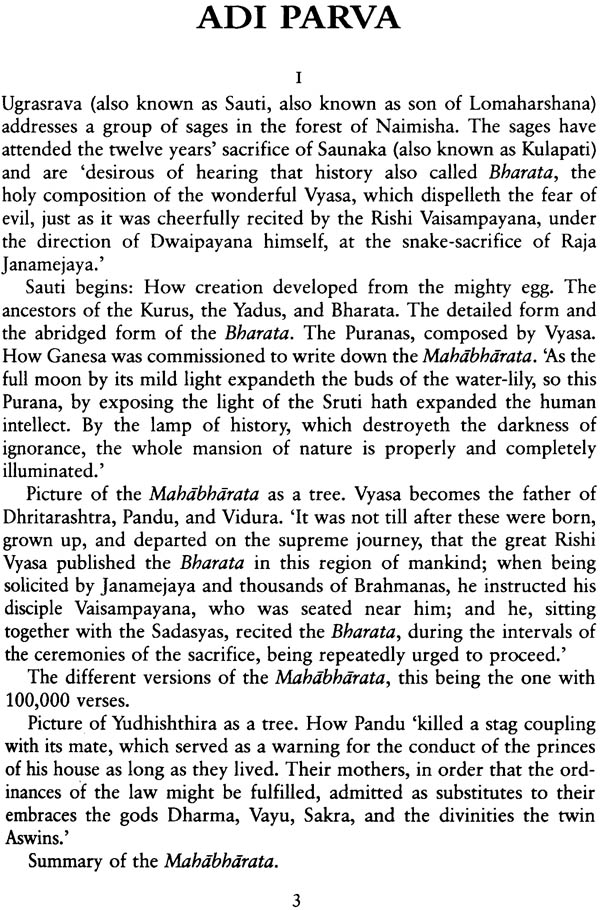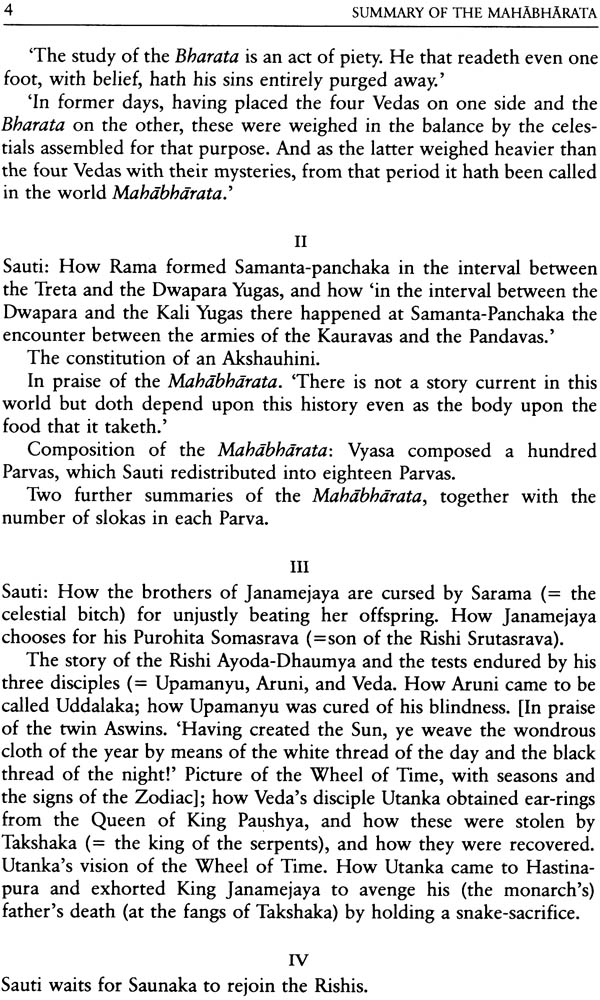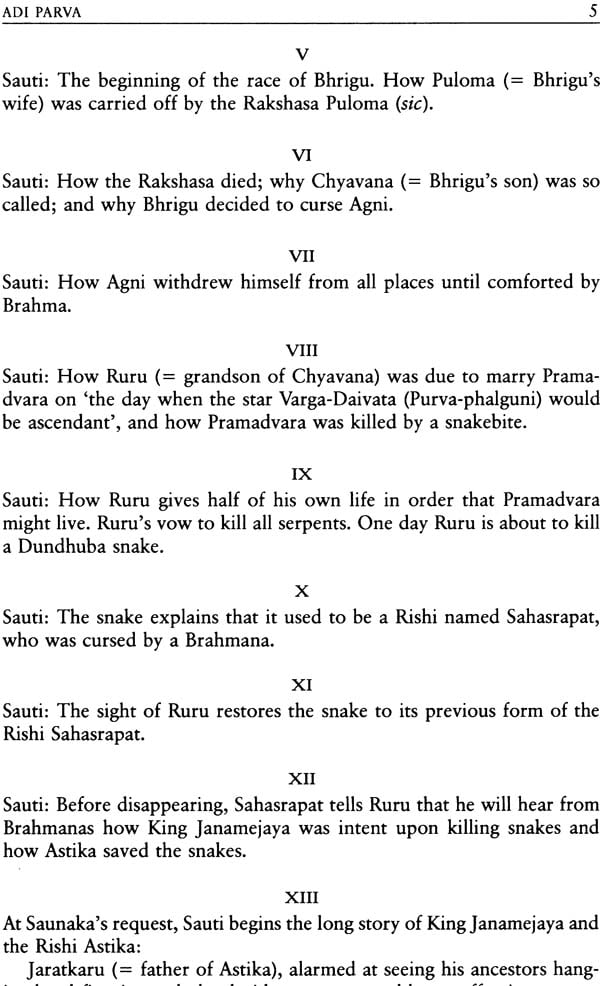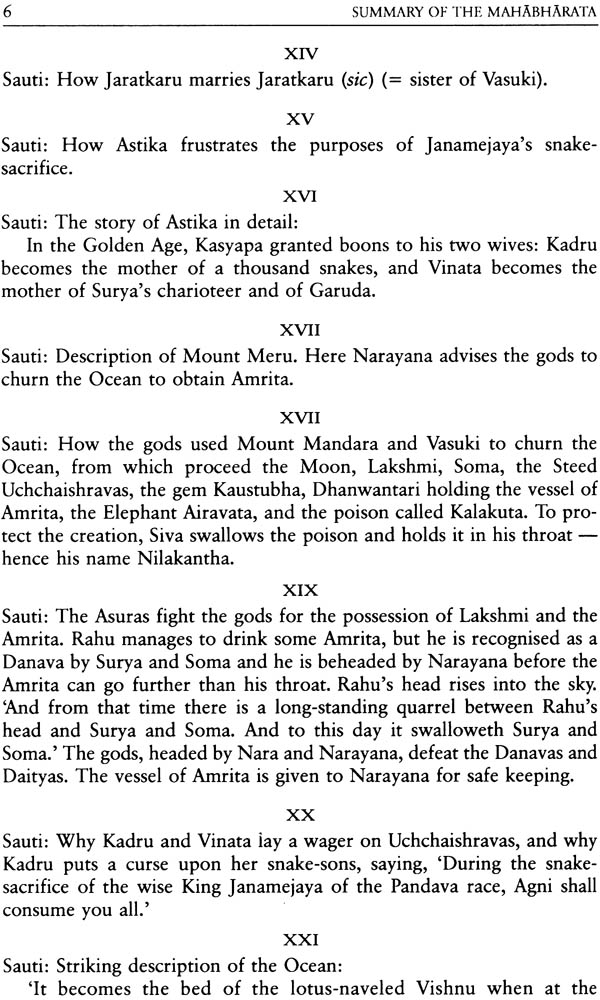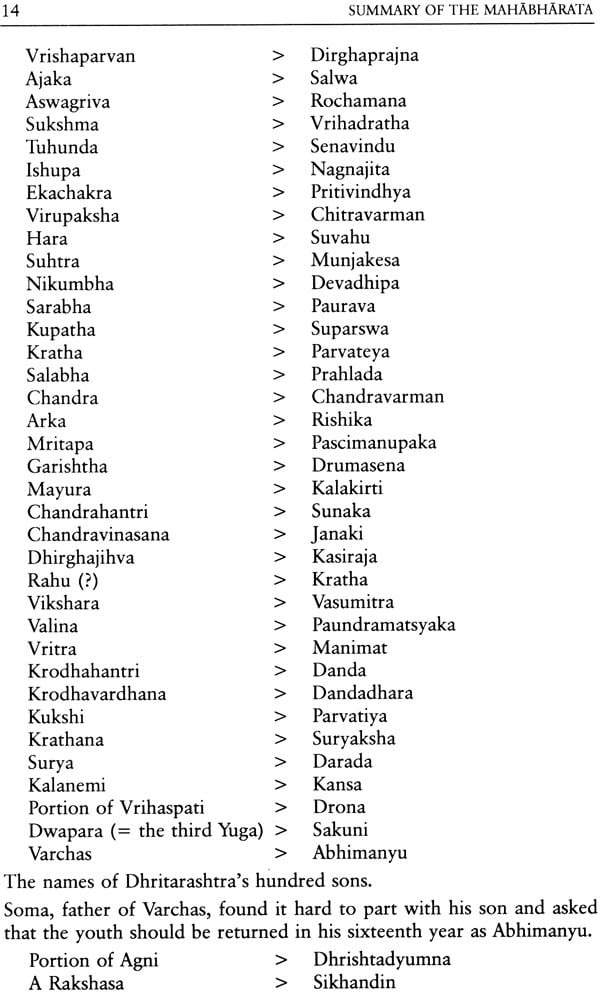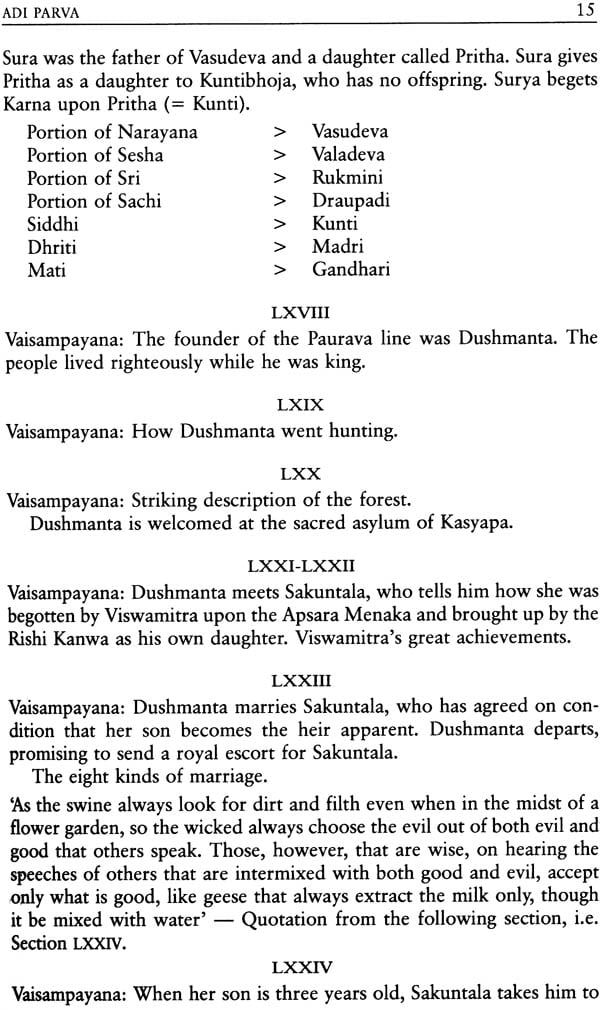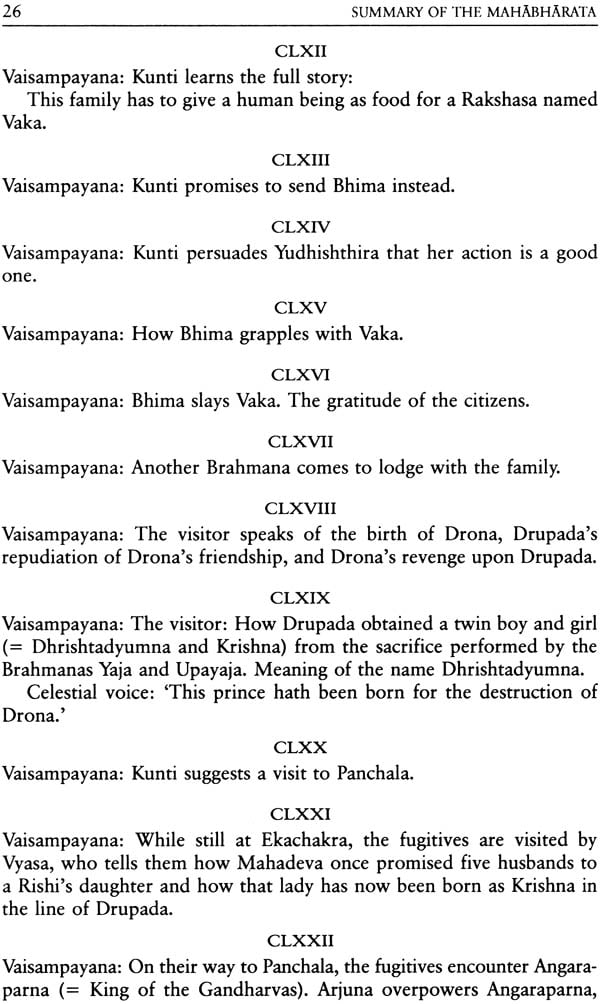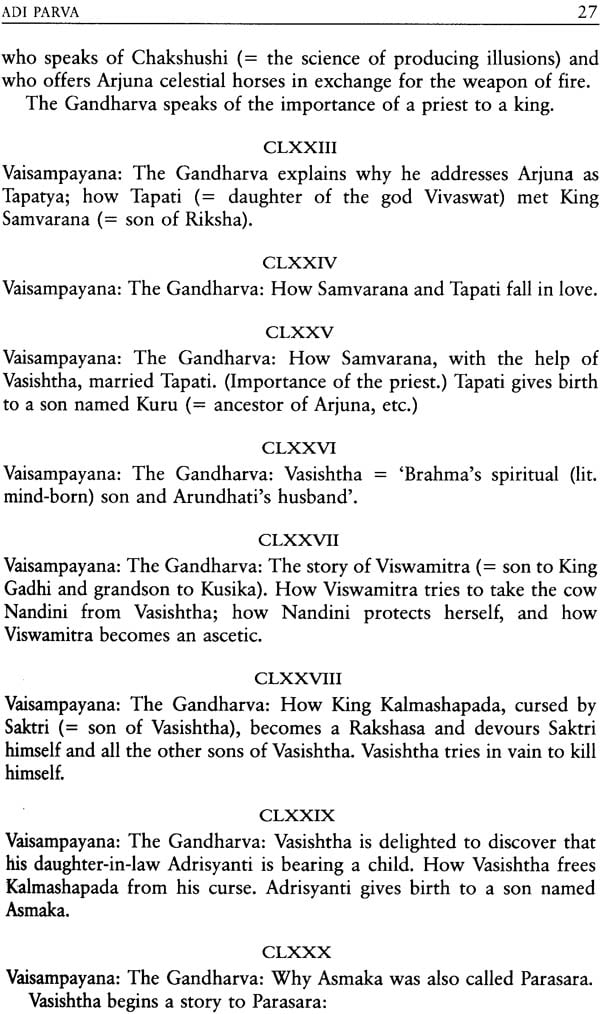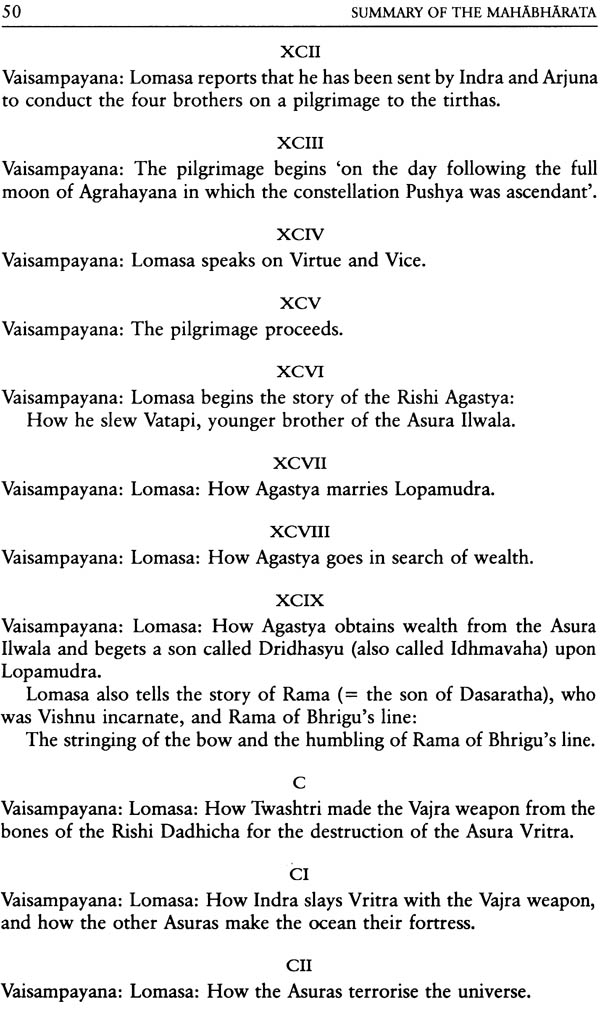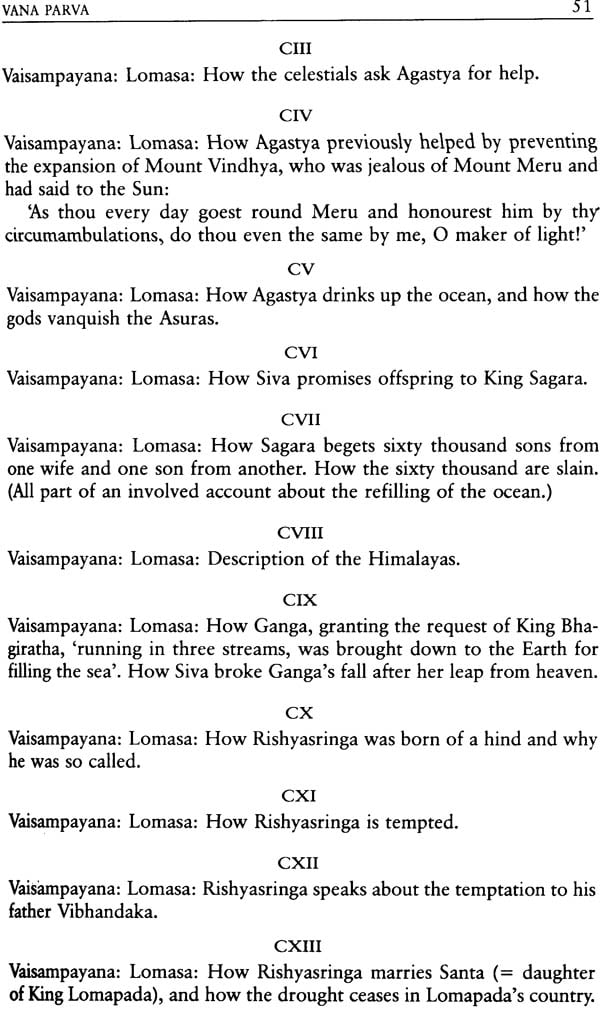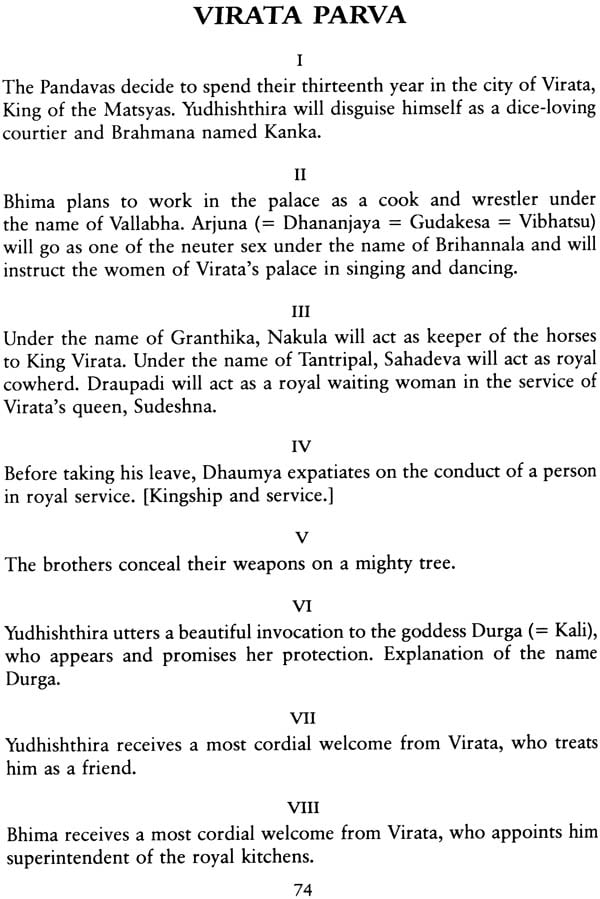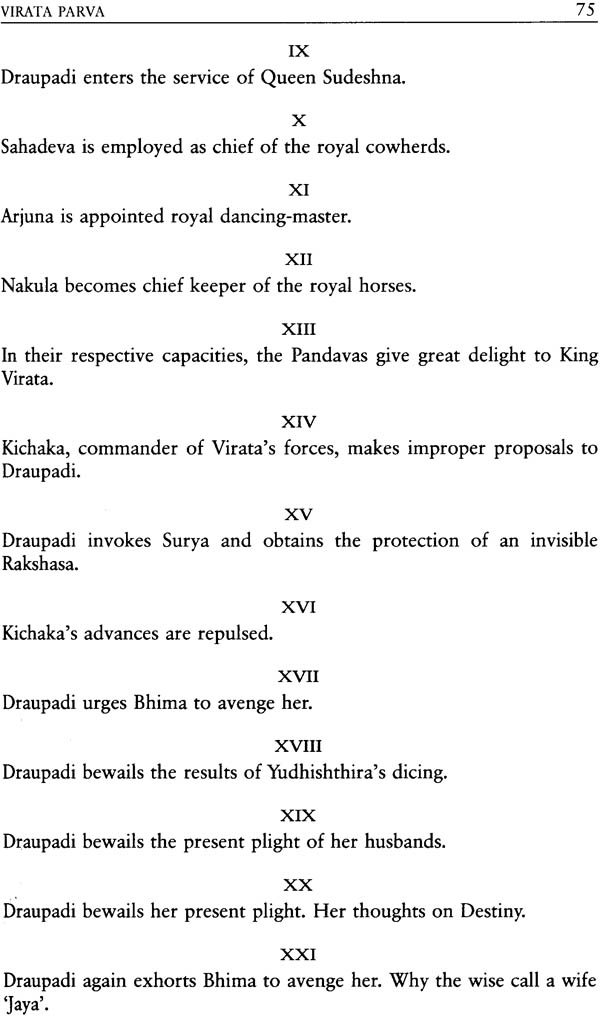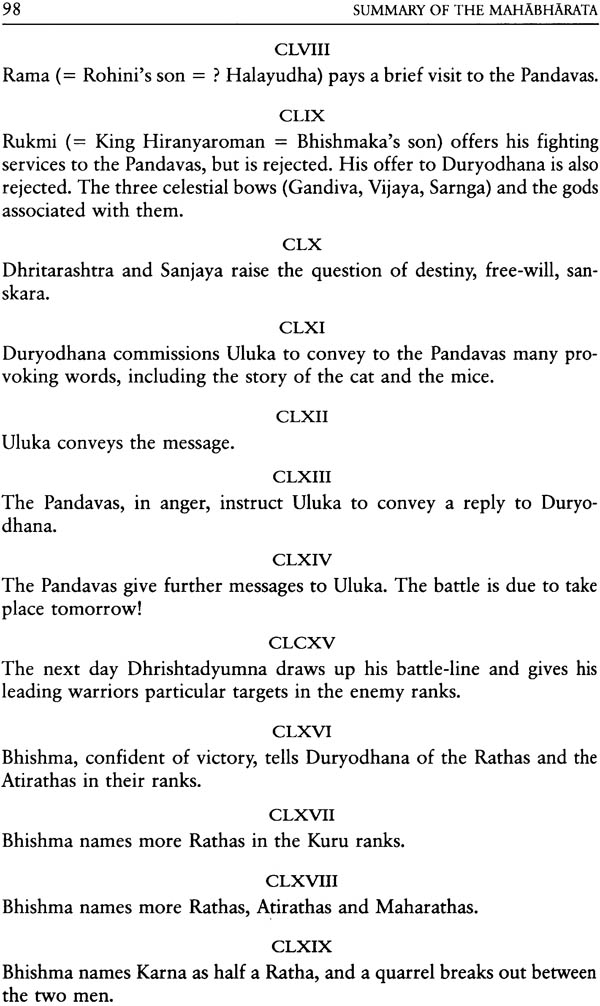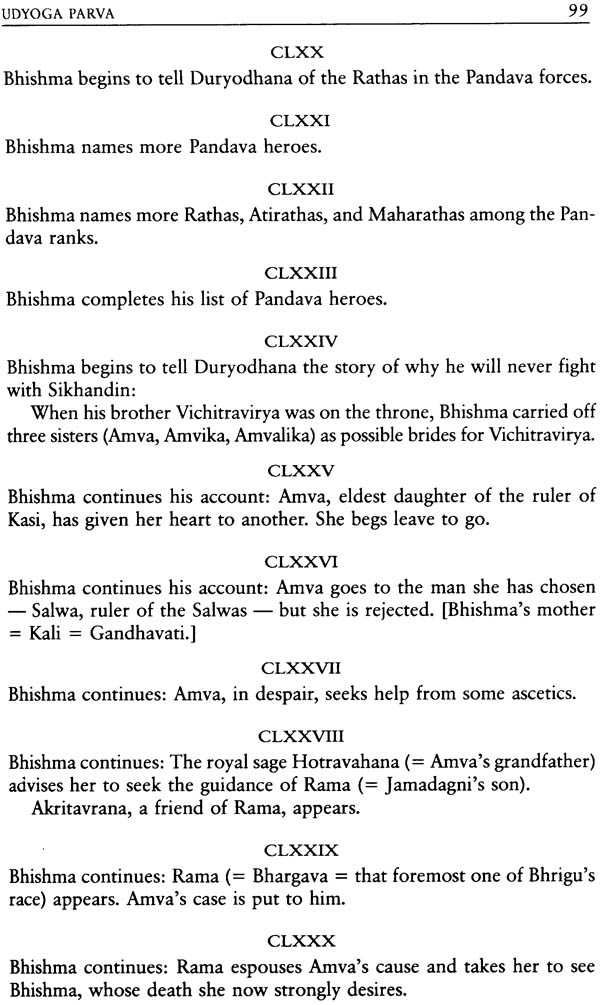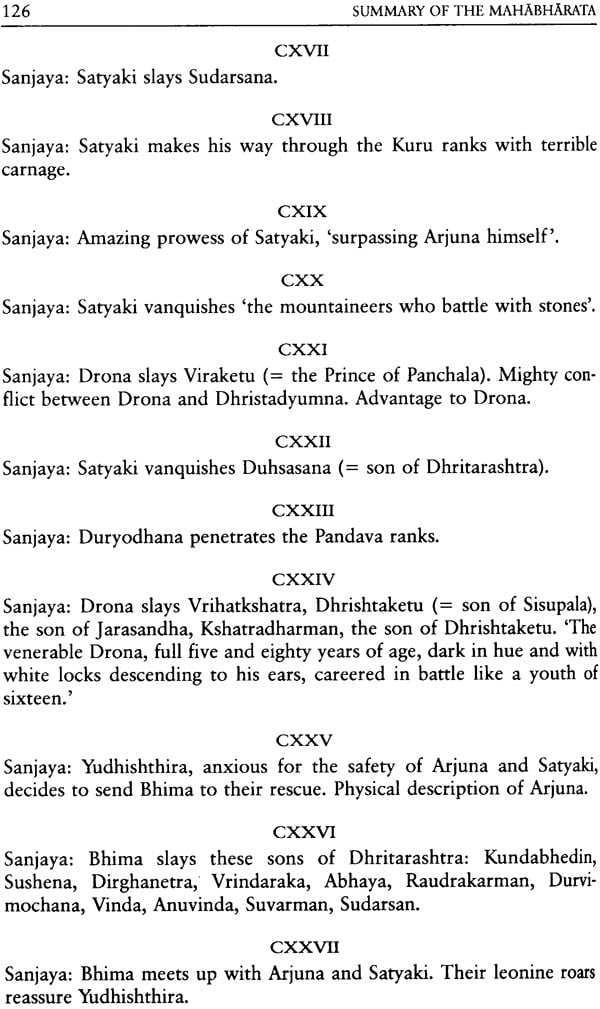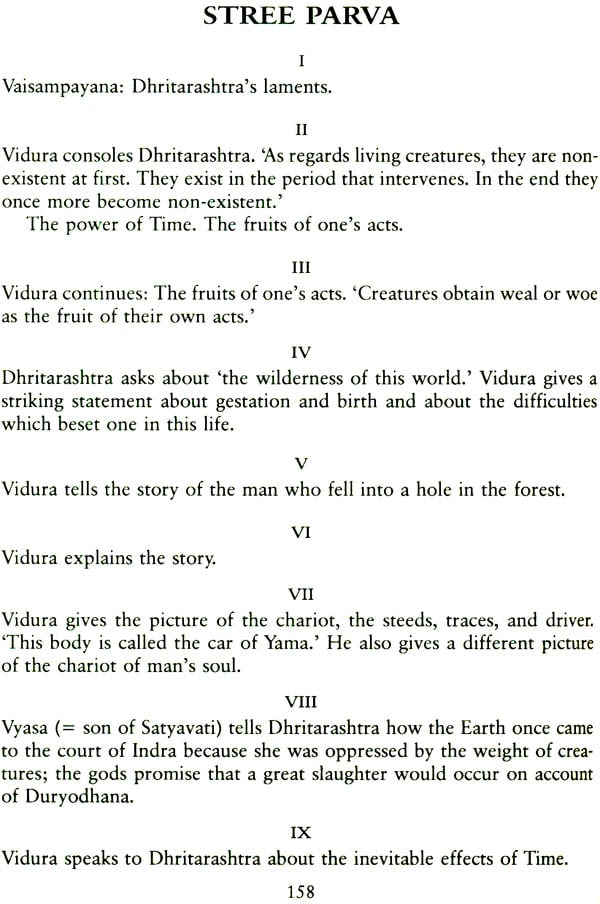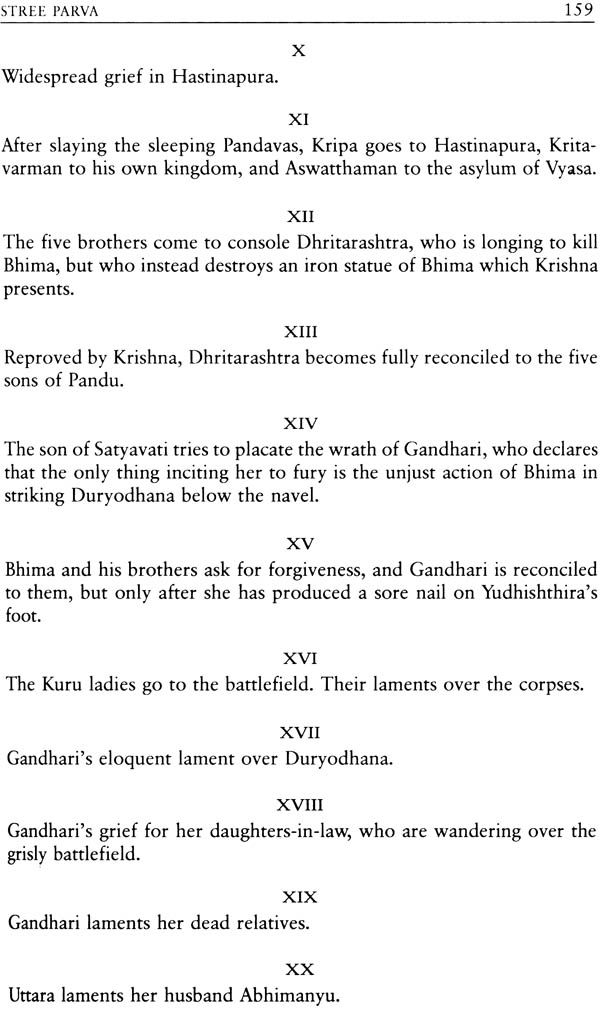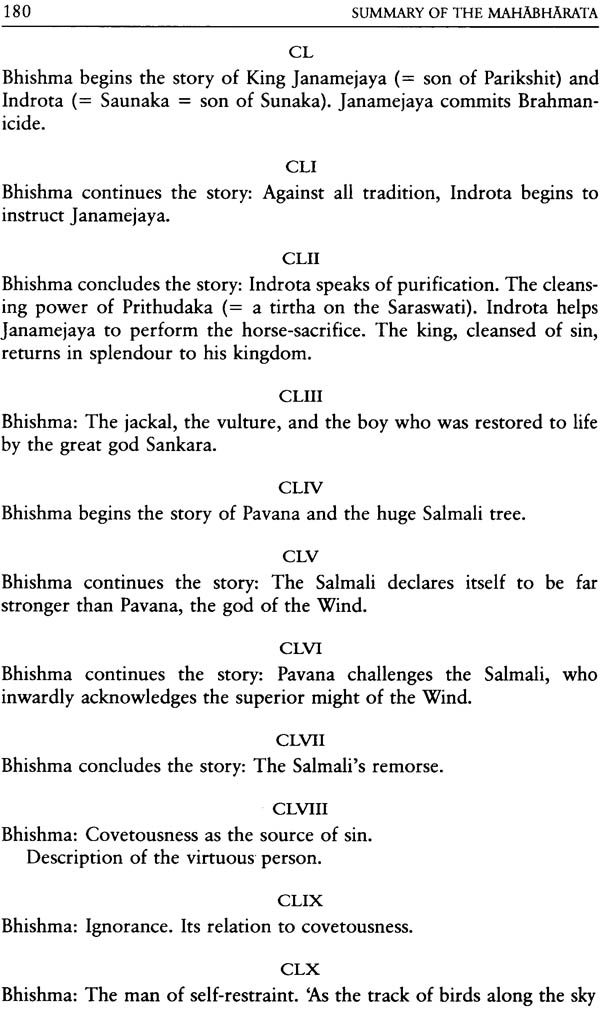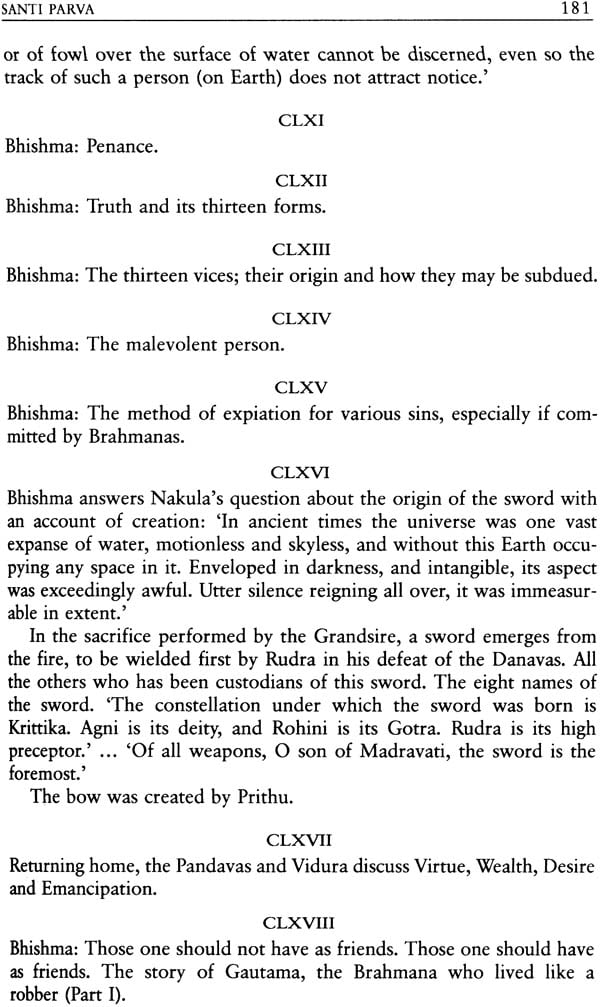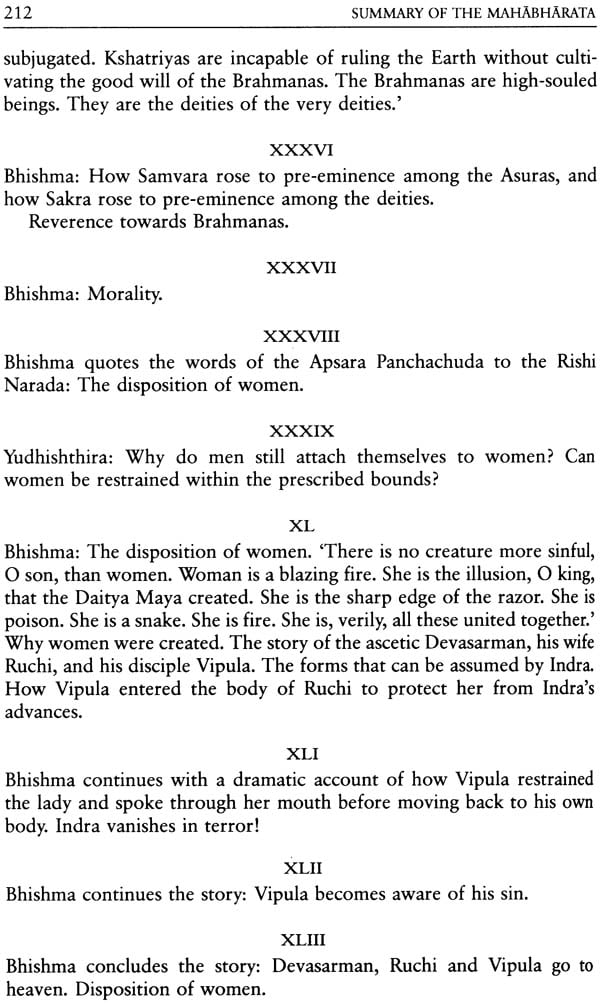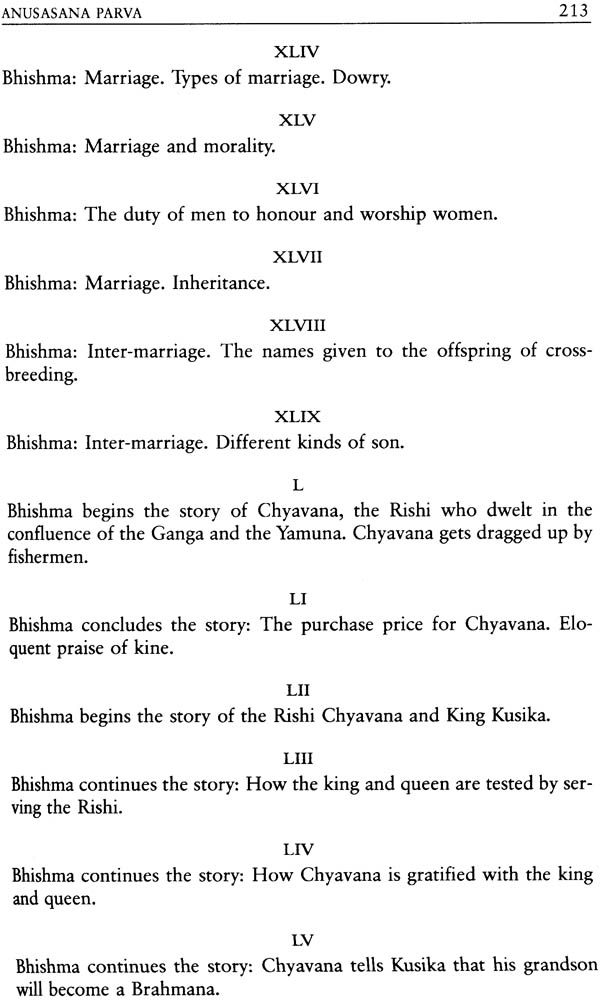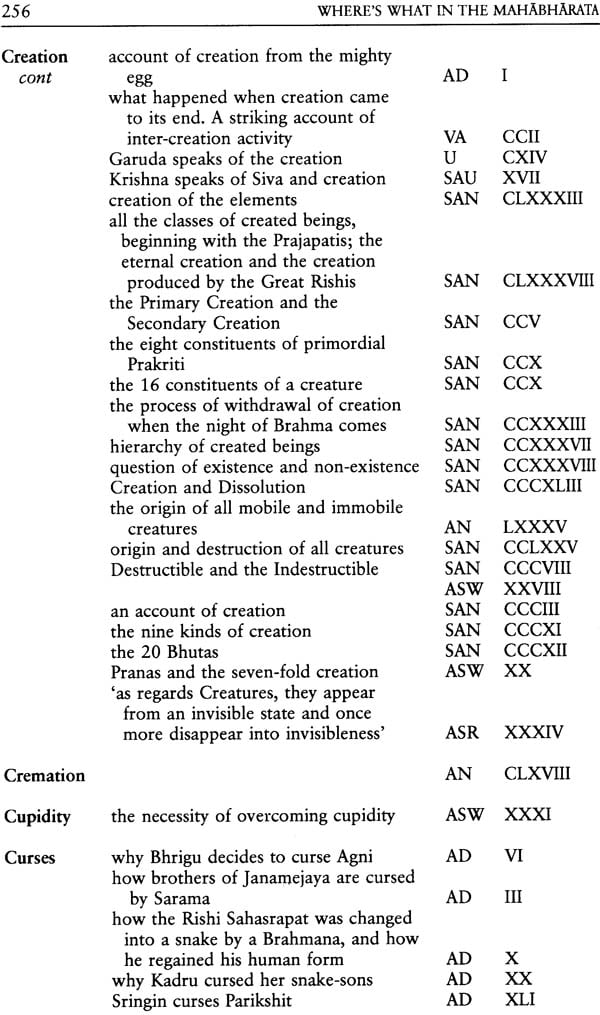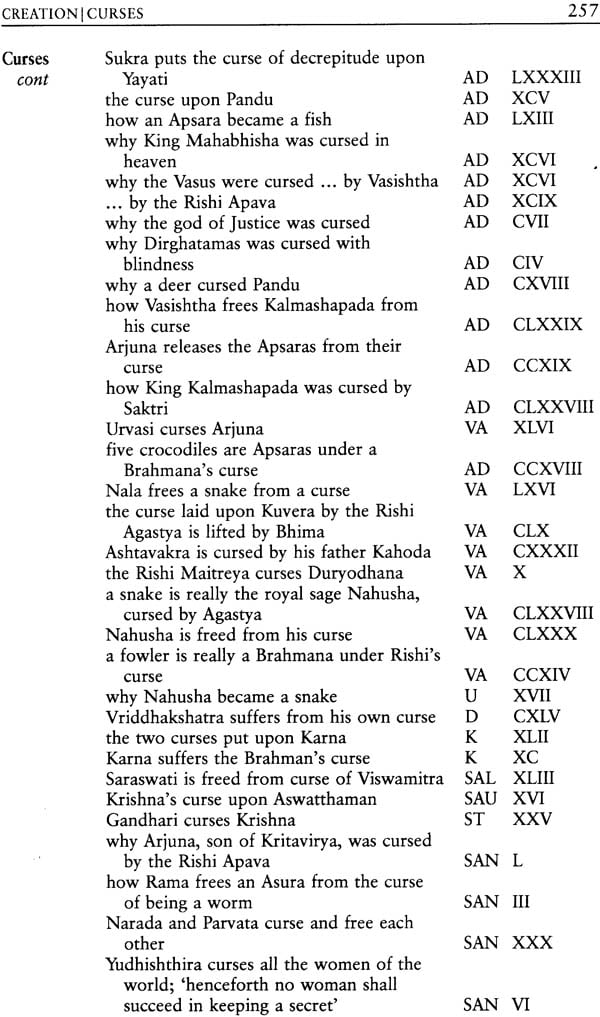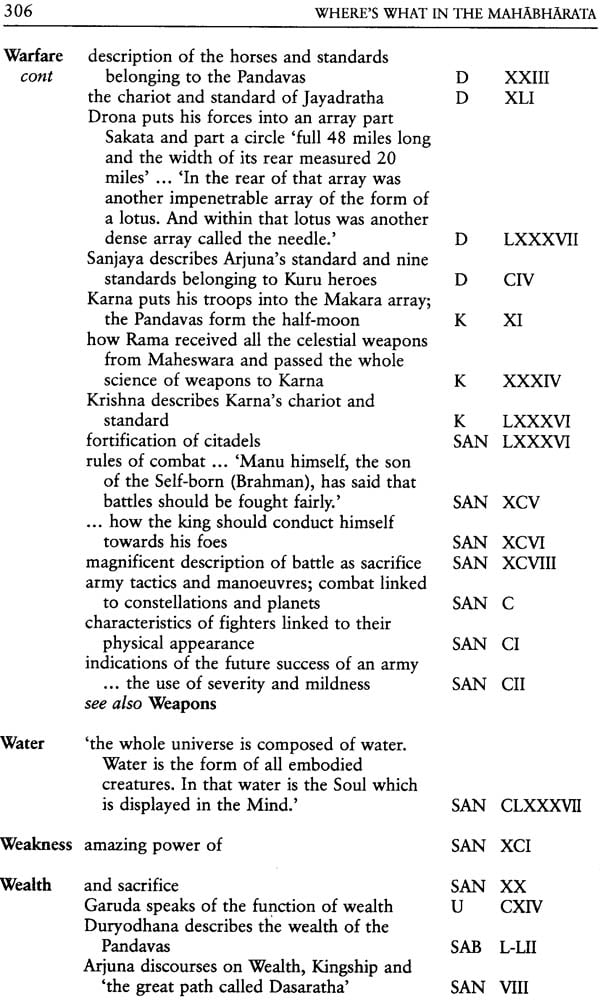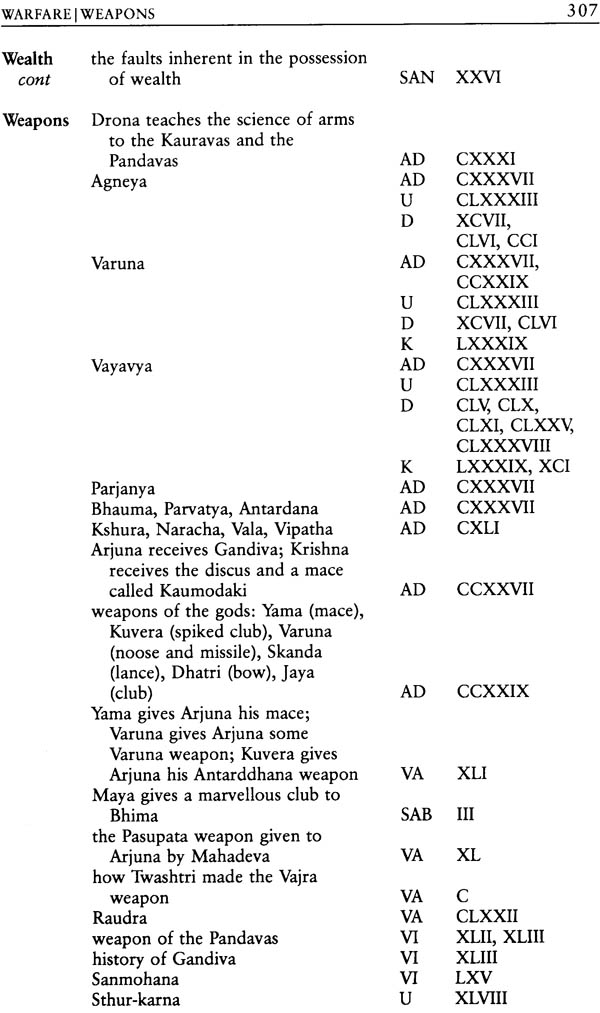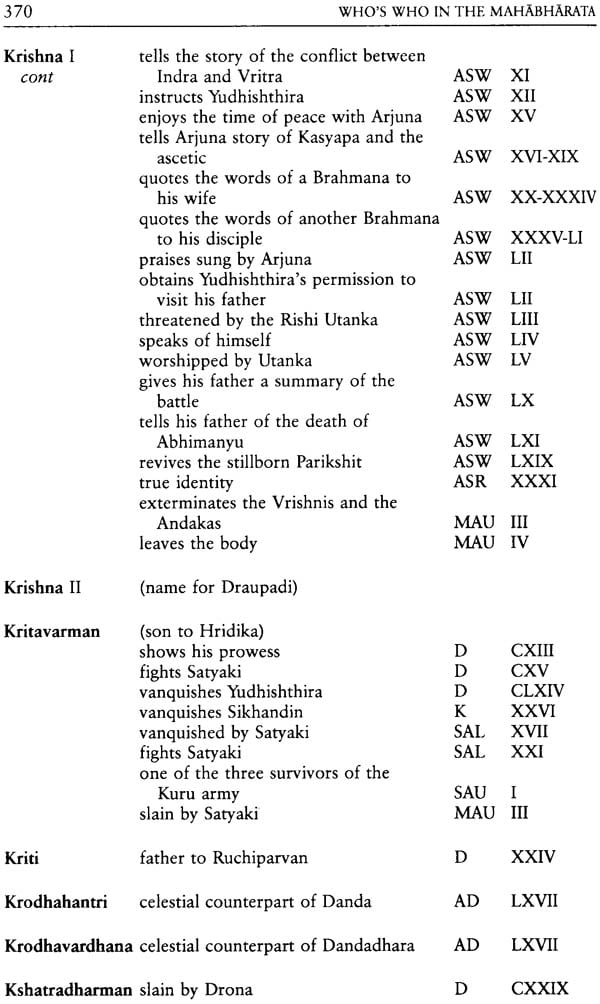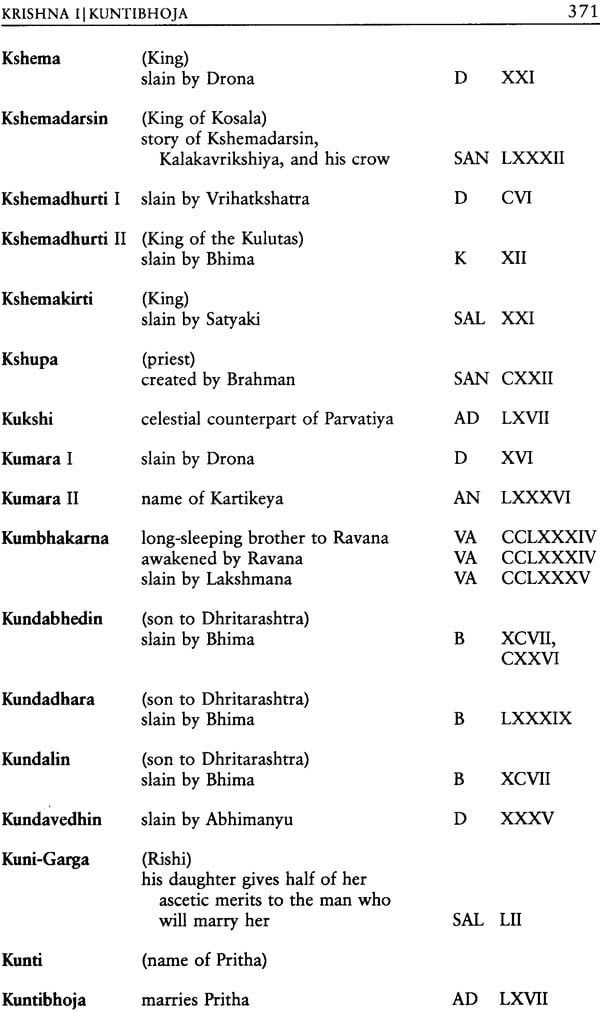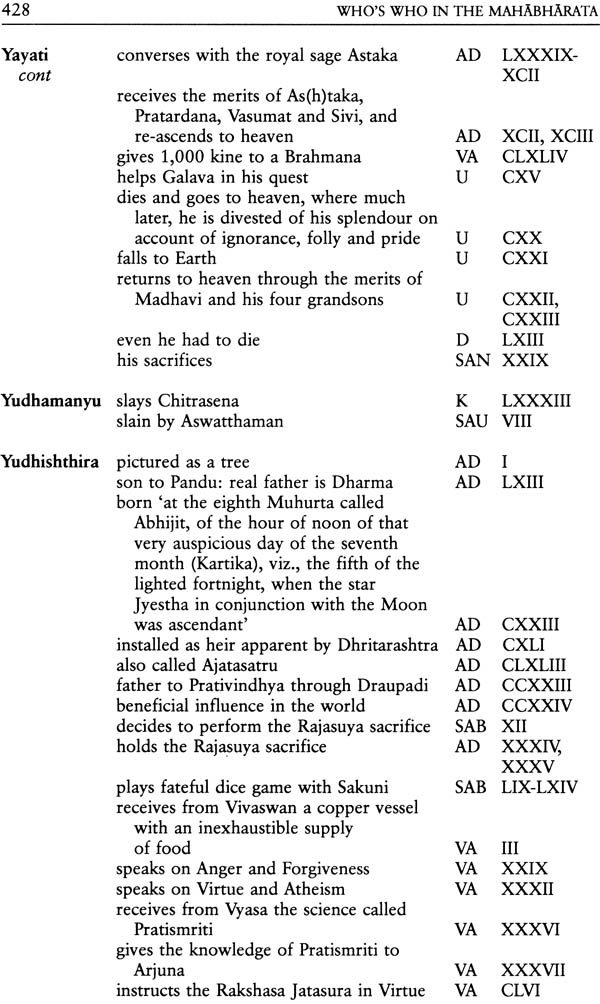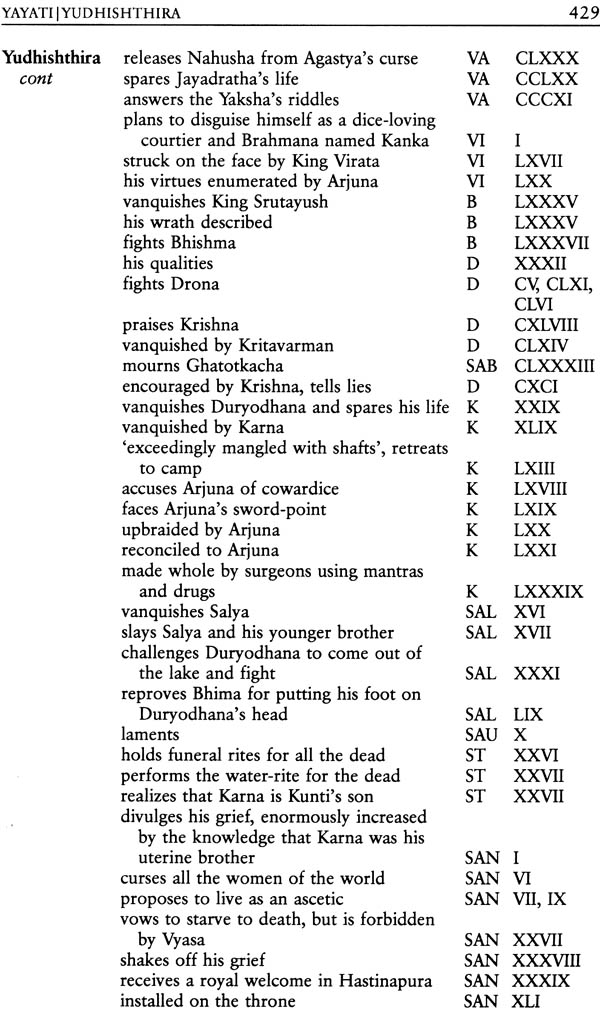
A Mahabharata Companion
Book Specification
| Item Code: | NAB868 |
| Author: | Arthur Farndell |
| Publisher: | ST James Publishing |
| Language: | English |
| Edition: | 2003 |
| ISBN: | 1903843154 |
| Pages: | 445 |
| Cover: | Paperback |
| Other Details | 9.3 inch X 6.3 inch |
| Weight | 700 gm |
Book Description
The great epic tale of the Mahabharata, perhaps the world’s longest book, tells the tale of the Pandava brothers and the great battle of Kurukshetra. Although filled with wonderful stories that exemplify eternal truth, it is not easy for a modern reader to read from cover to cover. Arthur Farndell’s Companion has been compiled to act as a friend and guide to this great book. There are summaries of each ‘parva’ or chapter, an index of themes and subjects (‘Where’s What’) and an index of characters (‘Who’s Who’). With this companion we may enter the realm of the Mahabharata as into a maze, holding a thread that will lead us through the text with confidence and enjoyment. It also serves those who wish only to dip in and read the key sections, such as the spiritual gem, the Bhagavad Gita.
ANY ATTEMPT to read the Mahabharata can prove a daunting and humbling experience. This was the case in the late 1970s, when the first 70 pages were perceived as an incomprehensible mass of verbiage. The books were set aside for a few months, while courage was gathered for a second onslaught. The first 70 pages remained as intractable as ever, and the books were again put away, in a spirit of despondency, perhaps for ever.
But it was not to be so. Some months later a clear sound entered the mind and formulated itself into English as: ‘If you are finding this work difficult, so are others. What can you do to help them?’ This formulation immediately switched the emotional approach from a desire to gain mastery over something to a willingness to be of service. At that moment the complete method was laid out with astonishing clarity and simplicity: ‘Read the first section. Write down a summary of it. Read the second section. Write down a summary of it. Read each section in turn. Do not proceed to a new section until a summary of the current section has been written down. When all the summaries are complete, produce from them two indexes, one of topics and one of people.
This method was a joy to follow. The work flowed quickly through the 12 volumes and no problem was encountered that did not speedily resolve itself.
The two indexes, both incorporated in this present volume, were first printed many years ago and it is now felt that the summary on which they are based should also be published. It is presented in its pristine innocence, with the prayer that its sole function may be to encourage the reader to have recourse to the Mahabharata itself, of which this summary is the palest of reflections.
This work is based upon the excellent English translation of the Mahabharata published under the name of Pratap Chandra Roy. The summary preserves Mr Roy’s renderings of Sanskrita names and technical terms, although these show neither vowel length nor mouth position.
To help the reader with correct pronunciation some to the more important examples that are open to serious mispronunciation are listed on the following page in the forms in which this work presents them, together with their Devanagari forms.
| Acknowledgements | vii | |
| Foreword | ix | |
| A Note on Pronunciation | xi | |
| Locating the Parvas | xiii | |
| The Mahabharata at a Glance | xiv | |
| Part One | Summary of the Mahabharata | 1 |
| Adi Parva | 3 | |
| Sabha Parva | 34 | |
| Vana Parva | 41 | |
| Virata Parva | 74 | |
| Udyoga Parva | 81 | |
| Bhishma Parva | 102 | |
| Drona Parva | 114 | |
| Karna Parva | 136 | |
| Salya Parva | 147 | |
| Sauptika Parva | 155 | |
| Stree Parva | 158 | |
| Santi Parva | 161 | |
| Anusasana Parva | 207 | |
| Aswamedha Parva | 226 | |
| Asramavasika Parva | 236 | |
| Mausala Parva | 241 | |
| Mahaprasthanika Parva | 242 | |
| Swargarohanika Parva | 243 | |
| Part Two | Where’s What in the Mahabharata | 245 |
| Part Three | Who’s Who in the Mahabharata | 315 |
